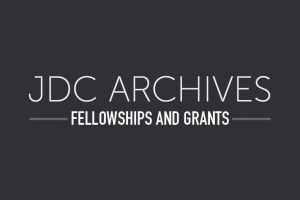
JDC Archives Documents in Forthcoming Book on Minsk
Dr. Elissa Bemporad Uses JDC Text Collections to conduct research on Minsk Jewry.
The author is the Jerry and William Ungar Assistant Professor in the Department of History at Queens College, City University of New York. Bemporad writes:
“Becoming Soviet Jews is a study of the acculturation process into the Soviet system as experienced by the Jewish population of Minsk from the Bolshevik Revolution of 1917 to the eve of the Hitler-Stalin pact of 1939. By focusing on issues of continuity and change in the lives of Minsk’s Jews, the book analyzes the modernization and social integration of one cultural-ethnic group within an intensely ideological state-system.
“In many of the medium-to-large urban centers with a sizeable proportion of Jews and located in the pre-1917 territory of the Pale (which included Minsk), the response to the Bolshevik emancipation project in the 1920s and 1930s was multifaceted and not circumscribed to “communism as anti-Jewishness” and “Jewishness as anti-communism.” Many Jews, whether former Bundists, Yiddish activists, political Zionists, religious practicing Jews, or Russified liberals, remained committed to some expressions of Jewishness, and attempted to walk the fine line between accepted Soviet behaviour and the social norms and expressions of Jewish particularity.
“Documents from the JDC archives helped me mould the core of Chapter Two entitled “Red Star on the Jewish Street” which primarily investigates the Sovietization of the Jewish street in the 1920s, and also studies the extent of the support that the JDC provided to different Jewish institutions in Minsk.
“JDC provided material and administrative support to a vast number of welfare, medical, industrial and cultural enterprises throughout the city in response to the deplorable conditions for refugees of the Civil War. Archival documents relating to the underground educational and religious institutions established in Minsk in the 1920s and early 1930s support an essential argument I make in Chapter 5, “Behaviour Unbecoming a Communist: Jewish Religious Practice in a Soviet Capital.” This chapter explores the changes that occurred in the Jewish religious practices of Minsk, including the relationship between secret religious education and the persistence of kosher meat production. As confirmed by the “Report of the Accomplishments of the Rabbinical Board in Russia during 5688,” (NY Collection 1921-1932), Minsk housed the largest underground yeshiva in the Soviet Union in the interwar period.”
View primary source documents and photographic images from the JDC Archives used in Becoming Soviet Jews here.
See other browsable collection highlights here.



